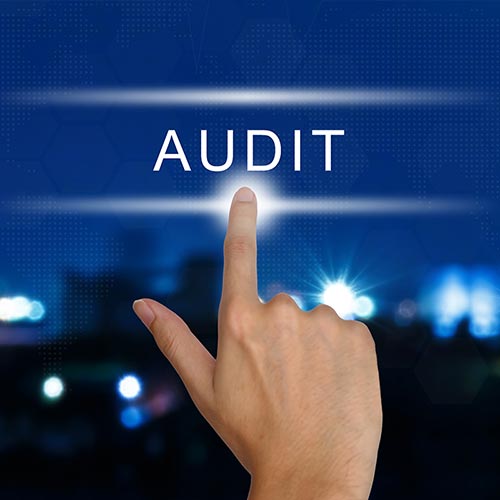How plan sponsors can minimize penalties in a DOL audit

Certain employee benefit plans (EBPs) are required to undergo financial statement audits in order to file the annual Form 5500. WK performs many financial statement audits of employee benefit plans. However, plan sponsors should also beware of another kind of audit: The Department of Labor (DOL) audit. A DOL audit covers some of the same aspects as a financial statement audit but generally goes into much more detail.
[ezcol_2third]The purpose of a DOL employee benefit plan audit is to examine the plan to make sure it is following the laws set forth by the federal government and its plan document. Because these audits can be very expensive and time-consuming, it’s important to make sure your plans are up to date and in accordance with the law. These audits can be triggered by a complaint or something that caught the DOL’s attention, or the plan could be selected by the DOL’s random audit selection process.
Regardless of how the audit started, it could end with some potentially expensive and damaging consequences. Below are some suggestions to ensure your organization won’t be penalized should an audit like this occur.
Improve communications with employees
One of the largest causes of EBP audits is complaints by employees. If employees become frustrated or misunderstand their plan, it’s more likely they might file a complaint with the Department of Labor. It’s always best to communicate with all employees individually and as soon as possible if they are experiencing frustrations. The employer should ensure it’s meeting of all its quarterly and annual communication requirements and consider providing participant education as well.
Conduct your own internal audit
An internal audit can be a great way to get some perspective on how you are administering your employee benefit plans and make sure everything is running as it should be. Whether you do this internally or hire a consultant, this can be a great way to ensure that your system is running in accordance with the law to avoid any audits by the Department of Labor or reduce the risk if you are selected. WK can provide this service through what we call “plan check-ups”. It’s better for you to find any deficiencies before the DOL does!
Continually update plan documents
Because laws regarding employee benefit plans are in a constant state of change, it’s critically important to make sure that any documentation regarding EBP plans is always up to date. This is something that can be easily addressed and monitored; failing to do so could be the first big mistake if your plan is investigated by the Department of Labor.
Make sure your Form 5500 is filed correctly
The Form 5500 is necessary to satisfy annual reporting requirements for employee benefit plans. The most common errors include failing to file on time, failing to answer multiple part questions, and not including all required schedules. If you are not sure how to file Form 5500, contact a WK advisor for help. Failing to file a 5500 could cause your plan to be flagged for a DOL audit, plus you could be assessed a penalty of more than $2,000 per day.
We can help
If you have any questions about your employee benefit plans and if they might be at risk of being audited by the Department of Labor, contact your WK advisor at (573) 442-6171 or (573) 635-6196.
[/ezcol_2third] [ezcol_1third_end]

OTHER STORIES FOR YOU
21st CENTURY CURES ACT RE-OPENS HRAs FOR SOME SMALL EMPLOYERS. The 21st Century Cures Act, signed by President Obama on December 13, 2016, will allow certain small employers that do not offer any group health plan to their employees to resume offering Qualified Small Employer Health Reimbursement Arrangements (QSEHRAs) to employees that can be used to pay individual health insurance premiums.
HELP EMPLOYEES SAVE FOR RETIREMENT WITH AUTO-ENROLLMENT AND AUTO-ESCALATION. Until a decade ago, employees had to affirmatively choose to participate in a company’s 401(k) plan, and the onus was on employees to understand the plan and determine an effective saving strategy based on their individual goals. However, the Pension Protection Act of 2006 gave employers the ability to jumpstart their employees’ retirement savings through plan features including auto-enrollment and auto-escalation. Plan sponsors that aren’t utilizing these features should consider whether they are right for your plan.
ARE YOUR EMPLOYEE BENEFIT PLAN’S FEES REASONABLE? The Department of Labor’s 408(b)(2) fee disclosure regulations require service providers to disclose how much employee benefit plan sponsors are paying in fees.
[/ezcol_1third_end]

